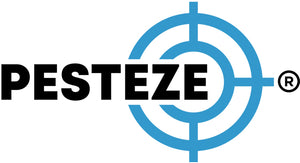KEEP ROSE CHAFERS AWAY FROM YOUR ROSES

KEEP ROSE CHAFERS AWAY FROM YOUR ROSES
Summary
Rose chafers are notorious for chewing leaves, flowers, and buds, leaving roses weak and damaged. Protecting your plants requires natural deterrents, careful monitoring, and preventive measures. With these eco-friendly strategies, you can keep your roses thriving and free of pests.
Features
-
🌼 Handpicking – Remove chafers early in the morning when they are sluggish.
-
🪴 Companion Planting – Use garlic, chives, or tansy nearby to repel pests.
-
🌿 Natural Sprays – Neem oil and insecticidal soap protect roses safely.
-
🪤 Traps – Place baited traps away from rose beds to lure chafers.
-
🧹 Garden Hygiene – Remove decaying matter to reduce beetle hiding spots.
-
🔎 Regular Checks – Inspect leaves and buds daily during peak season.
Guide Description
Rose chafers are destructive beetles that emerge in late spring and early summer, feeding heavily on roses and other flowering plants. These pests can quickly skeletonize leaves, damage blossoms, and weaken overall plant health. Fortunately, there are natural and effective ways to deter rose chafers from roses without harming beneficial pollinators or the environment.
One of the simplest methods is handpicking. Rose chafers are easiest to remove early in the morning when they are less active. Gently shake branches or pick them off by hand and drop them into soapy water to prevent re-infestation.
Companion planting also works well to deter rose chafers. Strong-scented plants such as garlic, chives, and tansy confuse beetles and keep them away from your roses. These plants not only act as natural repellents but also enhance your garden’s biodiversity.
Another effective tool is the use of natural sprays. Neem oil is a proven organic solution that interrupts the beetle’s feeding and reproductive cycle. Insecticidal soap sprays also help protect roses by coating the pests and preventing them from feeding. Be sure to reapply after rain or heavy watering for maximum protection.
For larger infestations, traps can be useful, but placement is critical. Always position baited traps far away from your rose beds, as they can attract more beetles if placed too close. The goal is to lure chafers away from your prized plants and capture them before they cause damage.
Maintaining garden hygiene is another key factor. Rose chafers are attracted to decaying organic matter, so regularly remove fallen petals, leaves, and compost piles near rose beds. Keeping your garden tidy reduces beetle hiding and breeding spots.
Lastly, daily monitoring during peak infestation periods ensures that problems are caught early. By inspecting leaves and buds consistently, you can remove small groups of beetles before they multiply and spread.
By combining handpicking, companion planting, natural sprays, traps, and good garden maintenance, you can effectively deter rose chafers and enjoy healthy, vibrant roses all season long.
- Devansh Subbagari


Comments 0